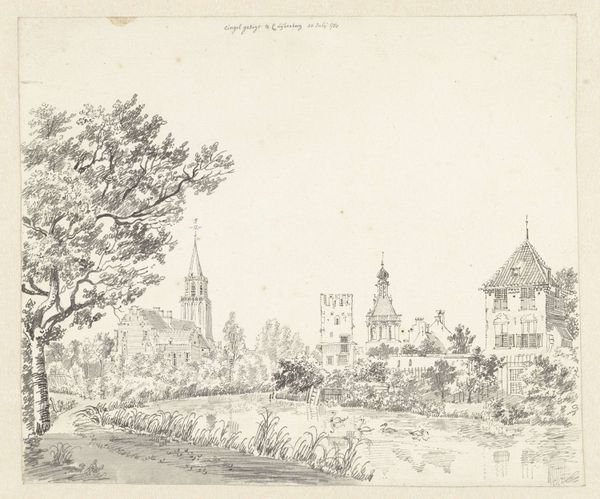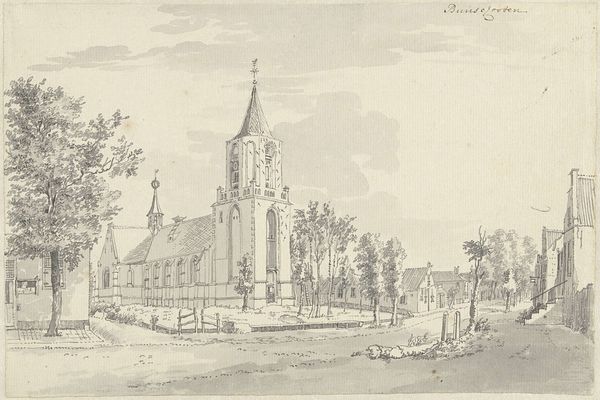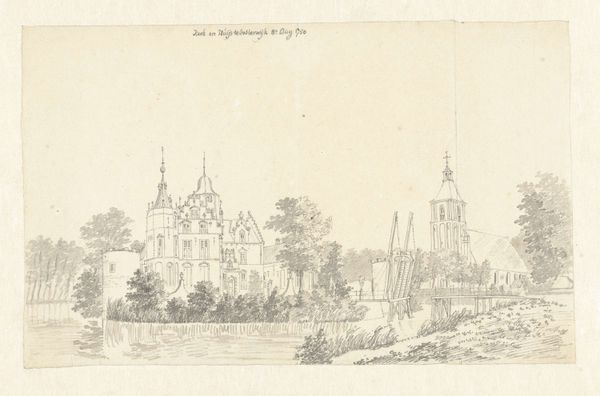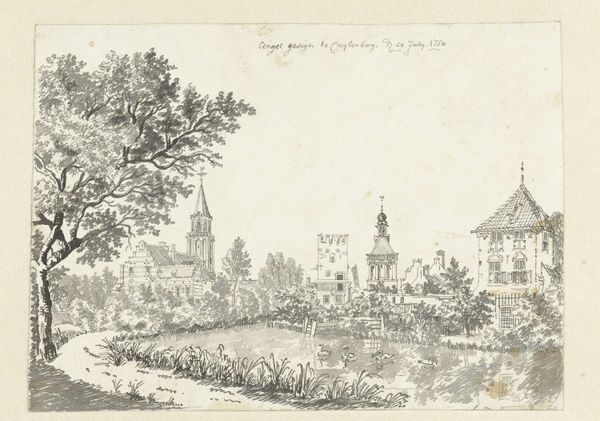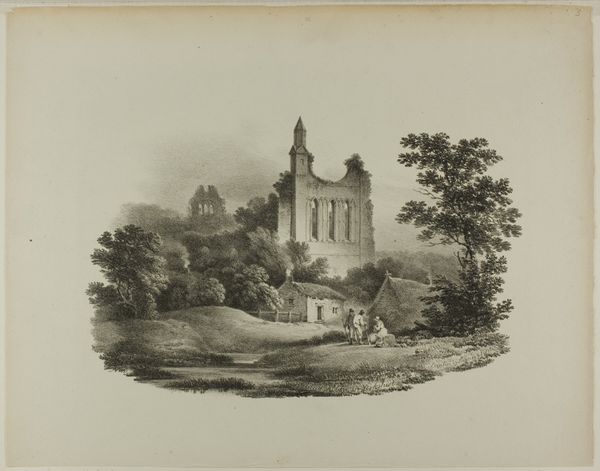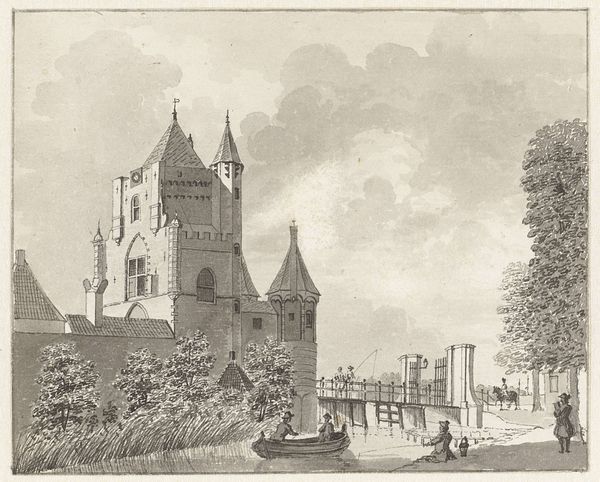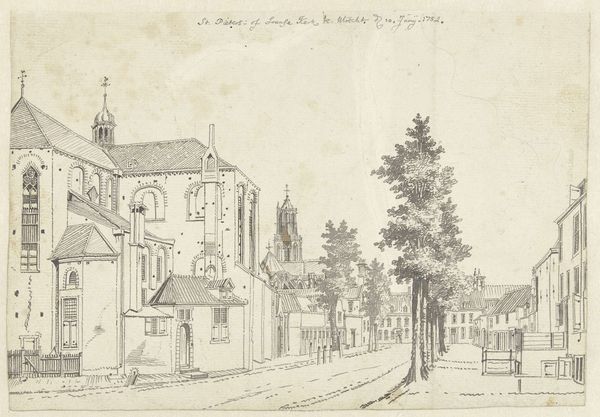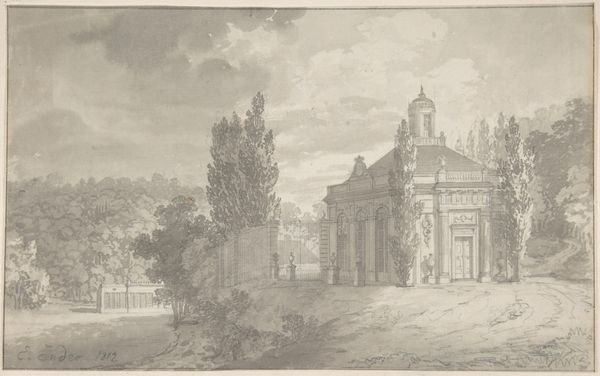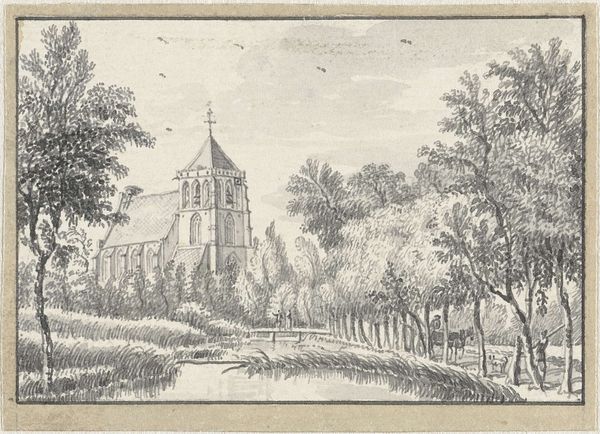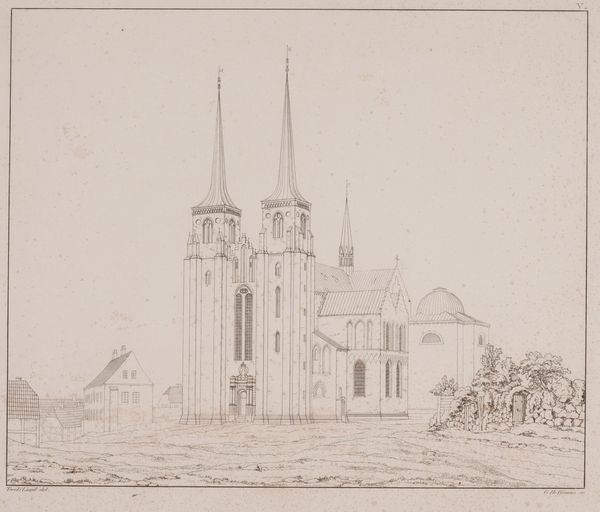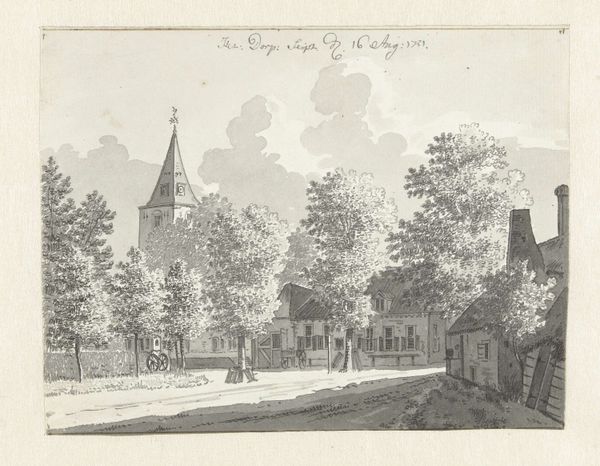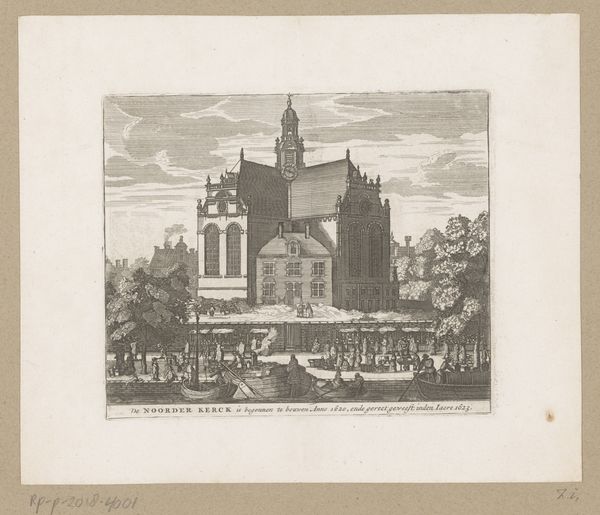
painting, watercolor
#
painting
#
landscape
#
watercolor
#
romanticism
#
cityscape
#
realism
Copyright: Public domain
Curator: It's a landscape titled "In Gustynia. A church of Sts. Peter and Paul" by Taras Shevchenko, created in 1845 using watercolor. It’s a quiet scene; the tones are very subdued. What captures your attention first? Editor: The level of detail for something made with watercolors. The architecture is so intricate. I'm curious how the artist approached this work. How do you interpret it? Curator: For me, the interesting aspect lies in the artist's hand – literally. Consider the paper, the pigment, and the labor required to produce this image. Watercolor, at this time, was becoming increasingly available as a manufactured good. Editor: So, the process itself is significant? Curator: Exactly! The creation of this landscape is tied to the developing art supply industry. And Shevchenko is implicated in, even dependent on, these capitalist structures. The artist becomes another worker creating a commodity. What about the subject itself, a church; could the choice of subject indicate class allegiance through patronage of a religious structure? Editor: I see. So, it is less about the finished piece and more about all the processes of material exchange that made the artwork possible? Curator: Precisely. It shifts the focus from the aesthetic value to the economic and social context of its production. And the way social position of the patrons, producers, consumers and how class and value play a role in the church community. Editor: I’d never considered art quite this way. Thinking about the material's journey is a really fascinating approach! Curator: Indeed. By exploring materiality, we uncover layers of meaning beyond the immediate visual experience. We move closer to understanding social values.
Comments
No comments
Be the first to comment and join the conversation on the ultimate creative platform.

